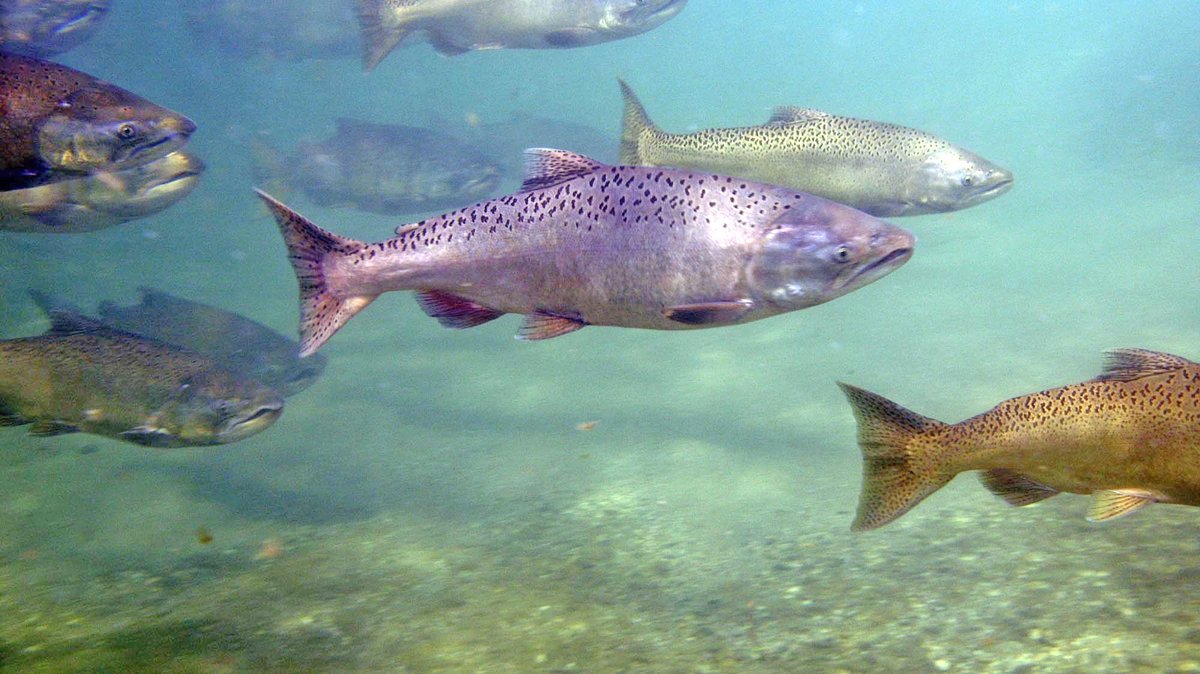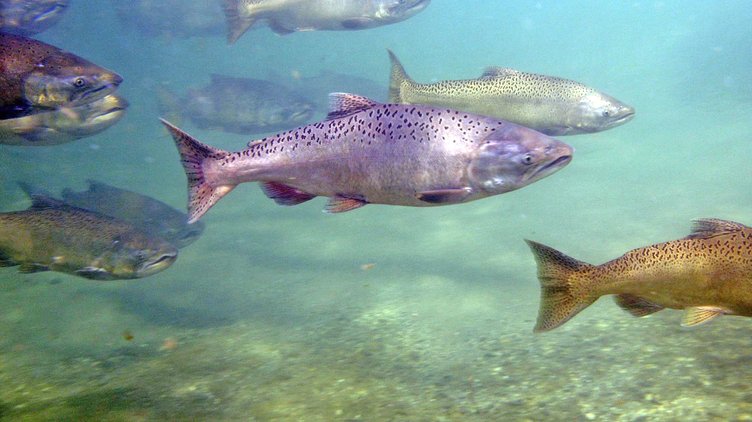LA GRANGE – In an exciting and unexpected conservation success, 1,200 adult spring-run Chinook salmon — originally released as part of the San Joaquin River Restoration Program — made their way to the Tuolumne River where they’ve found abundant habitat and cold, clean water in which to spend the summer prior to spawning in the fall.
The development represents an important milestone for the San Joaquin River Restoration Program and highlights the positive impact of the Tuolumne River Partners (Turlock and Modesto Irrigation Districts and the San Francisco Public Utilities Commission) longstanding stewardship and science-based management of the Tuolumne River.
The salmon, part of a long-term experimental reintroduction effort on the San Joaquin River, were drawn to the Tuolumne due to its robust spring pulse flows, favorable temperature conditions and higher water volumes — conditions created under the Tuolumne River Partners’ annual operations to support fall-run Chinook.
Drone surveys of nine pools in the Tuolumne River on July 16 counted 1,154 fish; fisheries biologists conservatively estimate that the total number of spring-run may be over 1,500.
“In addition to the pulse flow, numerous other factors, including large hatchery releases, extremely wet conditions during migration to sea, and closure of commercial fishing, all contributed to the unprecedented spring-run numbers seen on the Tuolumne in 2025,” said Andrea Fuller, vice president of FISHBIO and its senior biologist.
Emergency relocation efforts to prevent stranding
As spring pulse flows receded and the La Grange Diversion Dam — a historic over-pour dam built in 1893 — ceased overtopping, the plunge pool at the base of the dam became disconnected from the lower river, trapping a significant number of fish in the pool. In close coordination with the U.S. Fish & Wildlife Service (USFWS), California Department of Fish and Wildlife (CDFW), NOAA Fisheries, and fisheries consulting firm FISHBIO, the districts supported five relocation operations, successfully moving spring-run salmon to deeper, cooler pools downstream to support their survival over the summer. While CDFW representatives led the effort of physically handling the fish, district staff provided logistical and technical support that aided the relocation efforts.
“We were pleasantly surprised by the number of spring-run salmon identified in the Tuolumne River, and it was impressive to see the way district staff and state and federal fishery agencies worked together – from CDFW designing the relocation plan to TID’s construction and maintenance team developing a device to safely relocate the fish from the pool at the base of La Grange dam to a more suitable part of the river,” said TID General Manager Brad Koehn.
Science-Driven Monitoring
To better understand and support this unique salmon population throughout their entire lifecycle, the Tuolumne River partners have voluntarily implemented an extensive scientific monitoring program. This includes real-time monitoring of water quality including water temperature and dissolved oxygen at key points along the river, detailed mapping of river habitats, and expansion of on-the-ground surveys to track fish behavior and spawning success. Weekly drone surveys continue to monitor the health and numbers of the Chinook.
“Our commitment to science-based, data-driven measures is making a real difference on the Tuolumne River,” said MID General Manager Jimi Netniss. “We’re excited to keep this momentum going and work alongside other agencies and partners who share our vision for a healthy river and fish populations.”
To protect the genetic integrity of both spring-run and fall-run Chinook salmon during the late summer and fall spawning season, the partners have proposed the installation of a segregation weir near Old La Grange Bridge that will provide separate spawning areas for spring-run and fall-run Chinook. This would help support the resilience of the overall salmon population. A weir is a barrier built across the river to alter water flow, often raising water levels or controlling the amount of water passing downstream.
Preliminary data — including submersible video from the CDFW and visual observations during relocation efforts — indicate that the vast majority of the returning fish are hatchery-origin. These findings, coupled with scientific studies specifically conducted on the river, suggest that habitat conditions in the river, enhanced by proactive management, are not only suitable for fall-run Chinook but can also sustain spring-run populations.
Based on the amount of available spawning habitat on the lower Tuolumne River, including newly constructed spawning habitat upstream of Old La Grange Bridge, there is sufficient habitat to support successful spawning and rearing by both spring-running and fall-running Chinook salmon if the available habitat is actively managed to the benefit of both runs. Planned future habitat restoration efforts on the lower Tuolumne River will provide additional habitat to sustainably support spring-run Chinook salmon into the future.
“We’re committed to being good environmental stewards, and it’s great to see our collective efforts pay off with so many fish on the Lower Tuolumne,” said SFPUC General Manager Dennis Herrera. “Together with our partners, we’re doing the work to protect and restore native fish populations on the lower river. The Old La Grange Bridge project is a preview of the future. It’s an example of the many projects to come as part of our longer-term commitment to significantly invest in improving habitat on the Lower Tuolumne through the Healthy Rivers and Landscapes Program.”





